It’s normal for a well water filter to become clogged with contaminants over time. But if your well water filter looks muddy, something isn’t right.
There are several causes of mud in your well water filter. It’s important to get to the bottom of the problem so you know how serious it is – and, most importantly, how to resolve the issue.
In this guide, we’ve shared the 9 most common causes of mud in your well water filter, and what to do about it.
📌 Key Takeaways:
- Mud in a well water filter is most likely caused by a new well or well repairs, a damaged or degraded well, or an incorrectly sized or poorly located well pump.
- The “mud” in your filter might be something else. Certain contaminants in a well water filter have a mud-like appearance, including iron, manganese, and organic matter.
- To prevent mud from clogging a well water filter, inspect and flush your well, and repair it if necessary. Ensure you have the right filters to treat the contaminants in your water.
Table of Contents
📖 5 Causes Of Mud In A Well Water Filter
If your well water filter contains actual mud, the likely causes are listed below.
1) New Well Installation
Just had a new well installed?
It’ll take a few weeks before the contaminant levels in your water drop. When a new well is drilled, the surrounding soil and rock are disrupted, causing collapses of earth that lead to mud and soil contamination.
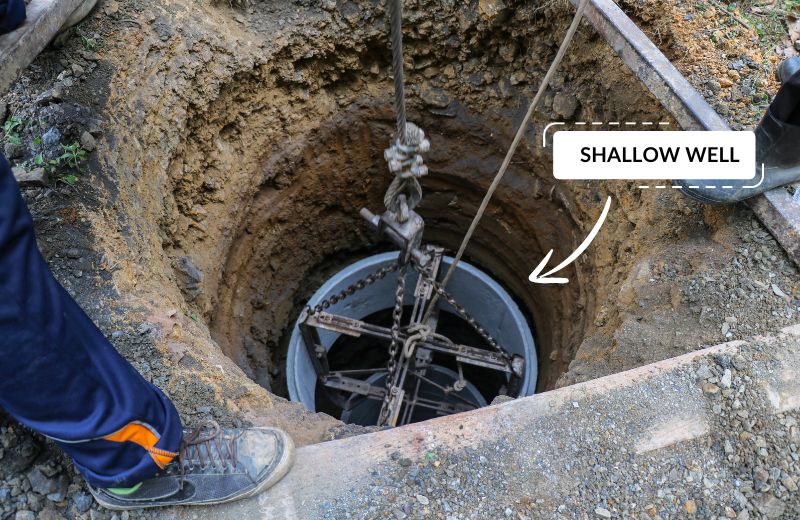
2) Well Repairs
If your well has recently been repaired, that’s another way for mud to enter your water supply.
Repairs may involve removing and replacing sections of the well components, allowing mud, soil, gravel, and other materials to leak into your well system.
3) Damage to Well Screen Or Casing
A well screen is located at the bottom of the well, and acts as a filter, preventing mud, sand, and gravel from entering the well, while still allowing water to pass.
If the well screen is damaged or degraded, the well pump might draw muddy water into your plumbing, which eventually deposits in your water filtration system.
The well casing protects the well system from outside contamination. An old or incorrectly fitted well casing may develop cracks that allow sediment particles, including mud, to contaminate the well.
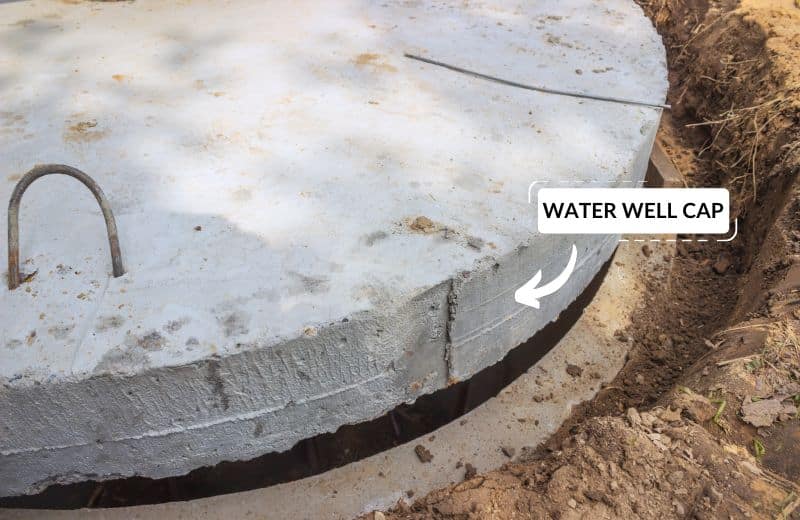
4) Incorrectly Located Pump
A well pump should be placed about 10-20 feet from the bottom of the aquifer. If the pump is too low, it may draw up sand, soil, and other debris with the water.
You might need to raise your well pump after so many years of operation to account for the rising debris at the bottom of the aquifer.
5) Improperly Sized Pump
Equally, if the pump is too big for the well, it might be too powerful, causing it to draw dirty water into the system. The contaminants in the water – including mud – will travel through your water supply and become trapped in the filter.
Learn how to choose the right well pump for your well water
⚗️ 4 Causes Of Mud-Like Deposits In A Well Water Filter
There are certain well water contaminants that have a mud-like appearance when they leave deposits in a water filter:
Iron & Manganese
Iron and manganese have a black, brown, or orange color that might look like mud at first glance when they build up on a well water filter. These minerals are commonly found in groundwater supplies in locations with iron-bearing soil and rock.
When iron combines with bacteria, it forms iron bacteria – a reddish-brown, thick, slimy material that’s easily mistaken for mud.
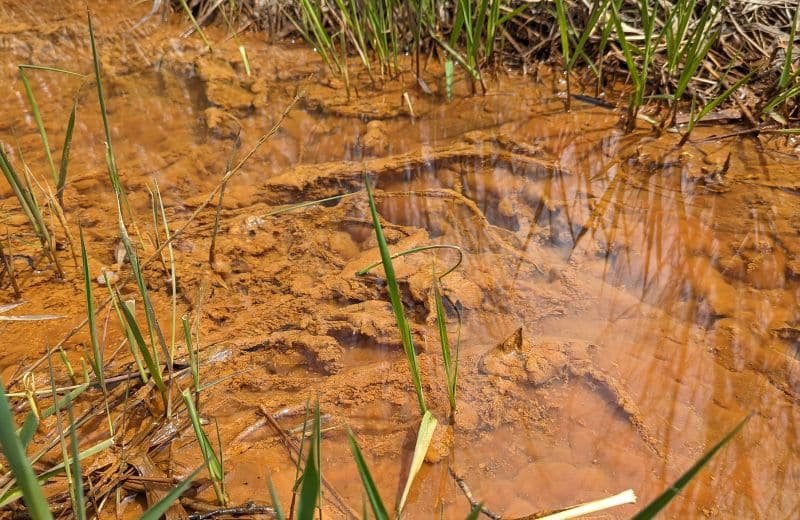
Rusty Pipes
If your plumbing system is old, corroded or rusted pipes might be the cause of the “mud” in your well water filter.
Acidic well water (water with a low pH) may corrode the water pipes upstream of your water filter, causing copper, iron, and other metals to flake away from the pipes, travel along your water supply, and get trapped in the filter media.
Organic Matter
Organic matter like algae might also be the cause of your “muddy” well water filter. Certain types of algae have a brown, sludgy appearance that resembles mud. Shallow wells are especially likely to accumulate organic matter due to flooding from heavy rain.
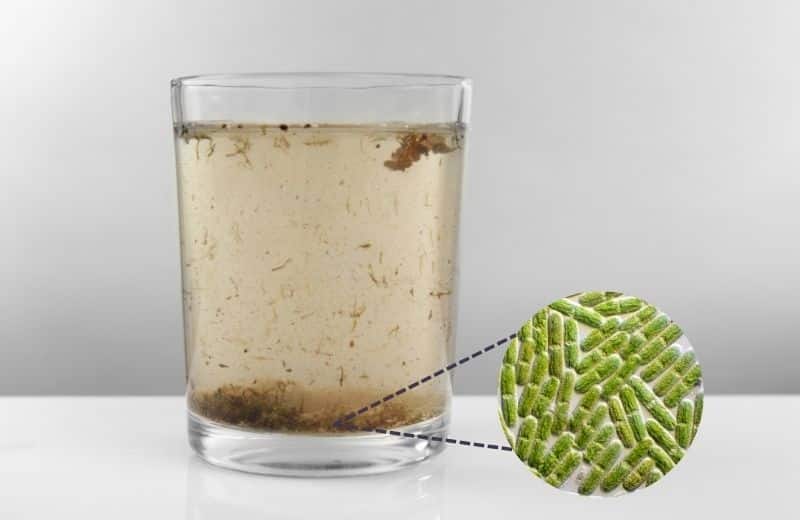
Septic System Contamination
It’s an unpleasant thought, but if you have a septic system that is located too close to your well, it may be the cause of the “mud” in your well filters.
Wells and septic systems should be at least 100 feet apart to prevent contamination. You should also make sure your septic system is serviced regularly to prevent animal or human waste from leaking into the soil around the well.
🧰 How to Fix A Muddy Well Water Filter
Now you know the potential causes of mud in your well water filter, let’s look at how to resolve the issue.
Step 1: Identify The Cause
First, identify the cause of the “mud” in your filter.
If you think you’re dealing with actual mud, you can move on to step 2. Otherwise, test your water to find out whether iron, bacteria, manganese, or organic matter is the cause of your muddy filter.
Even if you’ve already tested your water, test it again. Regular testing is important because changes in the environment can cause your well water quality to be altered from one year to the next.
Step 2: Inspect Your Well
If you’ve ruled out organic or mineral contamination and you think your well is flawed, contact a professional well contractor to inspect your well.
Step 3: Adjust Or Repair The Well
The well contractor will highlight whether anything needs to be adjusted or repaired, based on their findings.
This could be a relatively easy adjustment (such as raising the well water pump) or a more in-depth repair (such as repairing the well screen and casing).
It’s important to act quickly on any problems that are discovered. Even if your water quality seems fine, your well may deteriorate quickly, leading to even more expensive repairs.
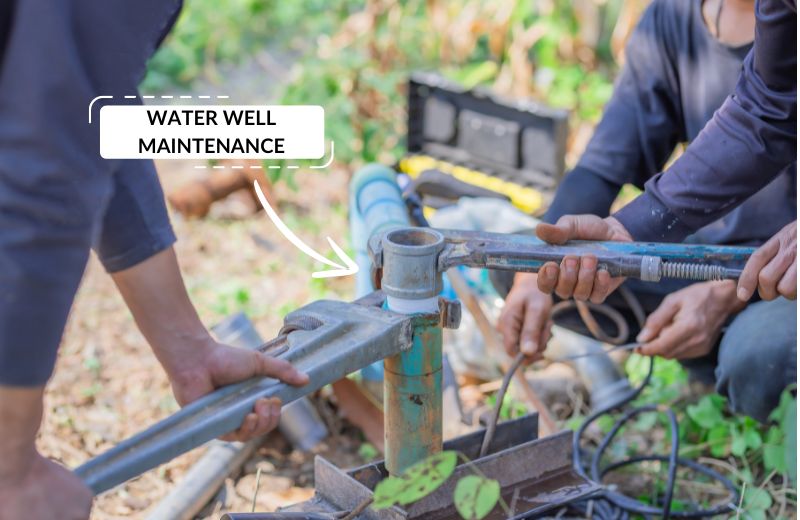
Step 4: Flush Your Well
If no problems are detected with the well construction, you may be able to resolve the issue in the short term by flushing the well.
To flush your well, connect a rubber hose to an outside faucet on the well water system and pump the water until it runs clear.
Keep in mind that flushing is only a temporary solution, and it’s quite wasteful, so you should still find a permanent way to eliminate mud from your water supply.
Step 5: Install Suitable Water Filtration
Finally, make sure you have suitable water filters installed to treat the cause of contamination in your well. Make sure the filters you have are installed in the correct order to prevent early clogging.
Regardless of the well filters you use, they should be installed downstream of the pressure tank, just before your water heaters.
Good filters for well water are:
Sediment Filters
Sediment filter cartridges are designed to trap particles of sediment, including sand and mud.
Different sediment filters have different micron sizes. Small-micron filters remove fine particles, like sand, while large-micron filters remove larger particles of sand and gravel.
There are two common sediment filter types:
- Spin-down filters, which are best for removing large contaminants like mud
- Cartridge filters, which target finer particles
Check out the most affordable sediment filters for well water in 2025
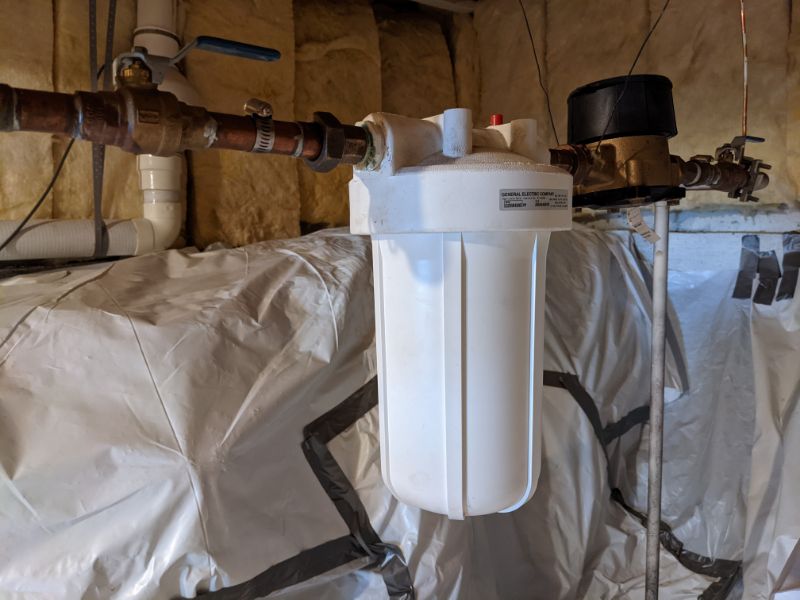
Iron Filters
An iron filter is the best solution for water that contains iron, manganese, and other heavy metals.
Backwashing Filters
Backwashing filters are low-maintenance filters that tackle several common contaminants that could look like mud in well water.
Certain sediment filters have backwashing designs. Iron filters, like air injection systems, also use backwashing to keep the media clean.
📌 We recommend combining several filters for the best results, or, at the very least, installing a standalone sediment filter to remove sediment from your drinking water. Click here to learn all about the best well water filtration systems.
📝 Final Thoughts
Mud in your well water filter is unpleasant, and it’s important to get to the root of the problem to make sure it isn’t something serious.
In most cases, simply flushing your well and installing water filters should resolve your muddy water filter issues, but you might also have to adjust or repair the well.

